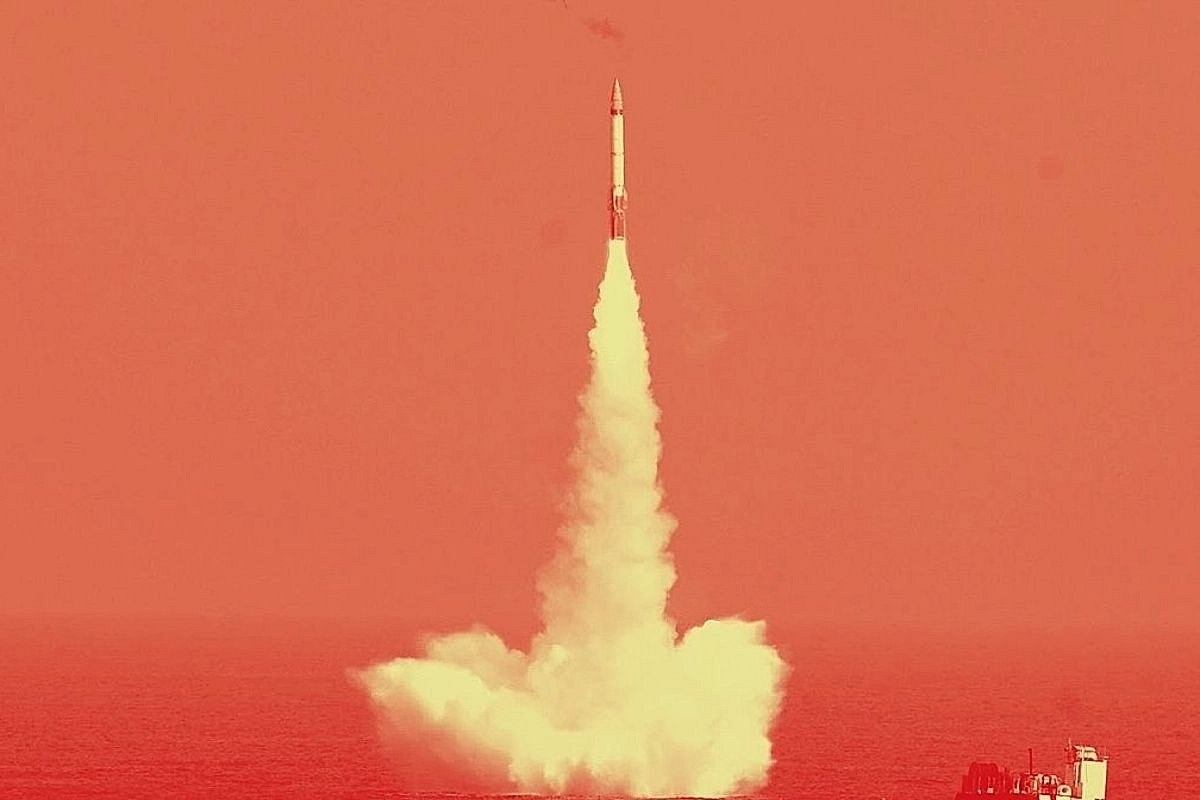Defence
Why The Submarine Launched Ballistic Missile Test From INS Arihant Is More Significant Than You Thought
- The missile test firing from INS Arihant is a signal to India's adversaries about the operationalisation of its second strike capability.

India’s K-15 subsurface launched missile test.
INS Arihant, the country's first ballistic missile submarine (SSBN), carried out a successful launch of a Submarine Launched Ballistic Missile (SLBM) on 14 October in the Bay of Bengal.
Although the Ministry of Defence (MoD) did not name the missile that was fired by INS Arihant, sources said it was the 750-km range K-15 SLBM, which has been in service for a few years now.
The missile test is significant for two reasons.
One, this missile test was a "user training launch". Apart from demonstrating India's 'second strike' capability, the success of the test has proven crew competency and validated the platform, INS Arihant, and, possibly, India's command and control architecture.
When deployed, submarines need to remain in touch with the command and control centre to receive the orders for launch if and when required.
This becomes more critical in the case of a nuclear-armed submarine, like INS Arihant, which would need a go-ahead from the Nuclear Command Authority to launch a nuclear-tipped missile.
The test demonstrates the credibility of the sea leg of India's nuclear triad, which is the ability to launch a nuclear strike from land, air and sea. India established its nuclear triad in 2018, with the completion of the first deterrence patrol by INS Arihant that year.
Given its 'no first use' nuclear posture, India needed to demonstrate the capability to launch a second strike or the ability to respond to a nuclear attack with one of its own. An assured second-strike capability is an essential element for effective strategic deterrence.
SSBNs are believed to be the most survivable of the three legs of the nuclear triad. While land-based missiles and aircraft meant for nuclear weapons delivery can be targeted by the enemy in a first, counterforce strike, taking out SSBNs at sea is relatively more difficult.
These boats can remain underwater for long durations of time to avoid detection.
In case of a first strike that destroys land-based nuclear delivery options, India can launch a retaliatory strike with its surviving SSBNs. For this, India will need a continuous at sea deterrent, and the commissioning of the three SSBNs currently in the pipeline — Arighat, S4 and S4* — will give India this capability.
While Arighat and S4 were launched in 2017 and 2021, respectively, S4*, is under construction at the Ship Building Centre in Visakhapatnam. Arighat could be inducted in the next few months.
It is for these reasons the Defence Ministry said the test proves India's "robust, survivable and assured retaliatory capability".
Two, this is the first time since its commissioning in 2016 that INS Arihant has launched an SLBM, or at least the first one that has been publicly announced by the government.
Before this test, all the SLBM launches acknowledged by the government were conducted from submerged pontoons.
The last public announcement related to India's SSBN programme was made in 2018, when INS Arihant completed its first deterrence patrol. Since then, India has quietly launched Arighat and S4 SSBNs.
Moreover, the test comes at a time when India is locked in a tense military standoff with China in eastern Ladakh, with increased deployment of troops and heavy weaponry all along the Line of Actual Control.
To sum it up, the test firing of an SLBM from INS Arihant is a major step for India in what will be a long and onerous process of establishing a credible nuclear deterrent at sea.
It is also a signal to India's adversaries about the operationalisation of its second strike capability.
Introducing ElectionsHQ + 50 Ground Reports Project
The 2024 elections might seem easy to guess, but there are some important questions that shouldn't be missed.
Do freebies still sway voters? Do people prioritise infrastructure when voting? How will Punjab vote?
The answers to these questions provide great insights into where we, as a country, are headed in the years to come.
Swarajya is starting a project with an aim to do 50 solid ground stories and a smart commentary service on WhatsApp, a one-of-a-kind. We'd love your support during this election season.
Click below to contribute.
Latest